This is our go-to Pie Crust Recipe — it’s simple to make (thank you, food processor!) and comes out perfectly flaky, tender, and buttery every time! Plus, we’re passing along some great tips from a French pastry chef as well as directions to par-bake (blind-bake) a crust if needed.
Use this pie crust in savory applications, like our favorite chicken pot pie, or in sweet applications like this Berry Pie! Looking for more good pie crust recipes? Try our graham cracker crust or Oreo crust instead!
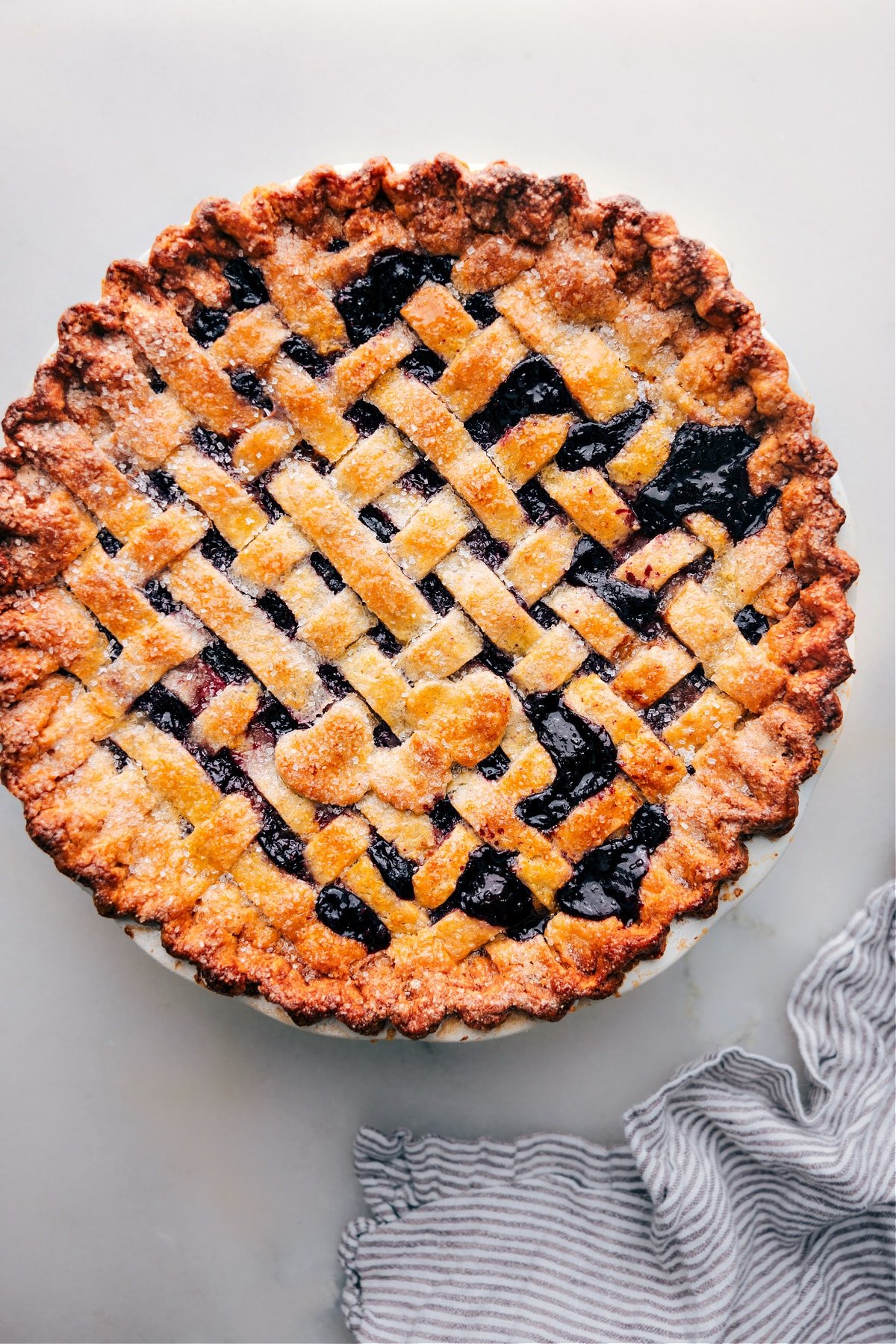
Our Favorite Pie Crust
My husband’s all-time favorite dessert is this Apple Pie. He can single-handedly finish the entire pie (by himself) in a max of two days and I’m quite certain he’ll never be sick of it. I’ve baked more pies than I could possibly ever count in the decade we’ve been married, and today I’m sharing my go-to Pie Crust for said pies.
It’s ultra buttery with a great structure and wonderful flakiness. And along with the recipe, we’re sharing the tips and tricks to create the best possible flaky pie crust recipe. Plus, if you need a par-baked crust, we’ll also share the best method for doing that.
There are a few flavor enhancers, but at the core, this is the perfect three-ingredient pie crust — butter, flour, and an egg yolk. Salt and powdered sugar are pantry staples that further enhance the flavor. Easy and minimal ingredients — most of the pie crust ingredients are pantry staples! Why make a pie crust recipe without shortening? We think this pie crust recipe with butter is the best because butter has more flavor than shortening and it yields a flakier pastry.
Step aside, commercial pie crust, nothing beats homemade!
Ingredients
- Butter: Makes the crust rich and flaky. Keep it cold for a crumbly dough. I also recommend using unsalted butter so we can control the salt levels.
- Ice Water: Helps the dough come together. Use very cold water.
- Flour: Forms the base of the crust.
- Salt: Mix well for even seasoning.
- Powdered Sugar: Adds a bit of sweetness and helps make the crust tender.
- Egg Yolk: Adds richness and helps bind the dough. I only use the yolk for a richer dough but you can use your extra whites in this Meringue Cookies.
How To Make Pie Crust (From Scratch)
There are several different ways you can make this Pie Crust recipe (alternative methods are detailed in the recipe card), but I’ve found the most success in making this recipe with a 10 to 14-cup food processor. Similar to making this Biscuit Recipe, we want to handle the dough as little as possible, and the food processor helps pull the dough together with minimal handling.
- Start with cold butter and cold water. The colder the better! We cube the butter and then freeze the cubes before starting. At this point, we also fill a bowl with ice and water.
- Pulse the dry ingredients (flour, sugar, and salt) just to mix.
- Add butter and pulse (never puree) just until butter is broken down to the size of peas.
- Add egg yolk and ice water. Pulse until a crumbly dough (that sticks together) begins to form.
- Shape — Dump the mixture onto the counter and, handling as little as possible, press and pat it into a round and wide disc — don’t knead! The dough crumbles should stick together nicely just by being gently pressed together.
- Tightly wrap the disc with plastic wrap and chill for 1-2 hours (or longer — up to 2 days!).
- Roll out the dough — more on this below.
Quick Tip
If you don’t have a food processor, you can still make this crust. Use a pastry cutter or even two table knives to cut the butter into the dry ingredients. Then use a wooden spoon to mix in the egg yolk and water.
How To Roll Out A Pie Crust
Growing up, rolling out a pie crust always gave me issues. The cutest French foreign exchange student that lived with our family growing up (also a daughter of a French pastry chef), gave us all her father’s tips. (And you can bet we listened closely after learning from her how to make the best crepes ever!)
Her father actually used a tea towel for handling dough which allowed handling to be kept to a minimum and made it easy to move from surface to surface. I like to use a few sheets of plastic wrap and parchment paper to roll the dough out in between — it works like a dream! (Use regular inexpensive plastic film wrap, not a sticky “press and seal” wrap.)
- Pull out two large sheets of plastic wrap and set them over a clean work surface.
- Place chilled dough in the center of the plastic wrap sheets. Top the dough with one long sheet of parchment paper and begin to roll it out.
- Continue to roll out the pie crust. Roll it out much larger than you think you’ll need. You want it about 3-4 inches larger than the pie dish. Why so big? This ensures it will fit in nicely without pulling or stretching (which causes shrinking). Plus, you’ll need plenty of excess for a nice and thick pie crust rim.
- Once the crust is fully rolled out, gently coax off the top layer of parchment paper.
- Use the overhang of plastic wrap on the bottom to pull the crust off the counter and then transfer the uncovered side right into the pie tin.
- Drape dough over the pie tin (again, no pulling or stretching) and press into place. Gently coax off the plastic wrap.
- More on finishing the edges of the pie crust below!
How To Crimp Pie Edges
There are many ways to finish the edges of a pie crust, but I like the look of crimped edges best. Crimping serves a purpose, too: It creates a seal that helps prevent the filling from leaking at the crust edges. The thicker the pie crust edge, the better it will look when baked. If the edges are too thin, they will burn or can shrink down a bit.
Here’s a quick breakdown: Trim off any large amounts of excess pie dough and then fold the remaining excess under the edge and seal together into a thick snake-like crust edge. Even out the thickness around the edge and make sure the dough is sitting on the rim of the pan. Don’t pull the crust — this will make it shrink!
Use both index fingers and your thumb to press the dough into a crimping pattern. Make sure your fingernails are short for the best results.
Easier method: Seal the pie together and form the thick snake-like crust edge. Then use the tines of a fork to press on the edges of the pie creating a nice pattern.
How To Make A Lattice Pie Crust
If you’re feeling ambitious, Elise from Simply Recipes.com has broken down the process (with step-by-step photos) of making the perfect lattice crust Otherwise, a regular pie crust topping will still look amazing and taste delicious!
How To Blind Bake A Pie Crust
Once you’ve got your pie crust in the pie pan, you can add in the filling right away (wait for it to cool first if it’s hot) or you can bake it. Here are the 2 baking options:
- Par-baking (also called blind baking), is the process of partially baking a pie crust before adding the filling (custard, pudding, ice cream, fruit, etc.). This ensures a crisp bottom crust before adding the filling and finishing the baking. (Note that you don’t necessarily need to par-bake a crust — only if the recipe specifies. Typically, if the bake time is 40-45 minutes or longer, it isn’t necessary to par-bake the crust.)
- Fully baking is necessary if the pie won’t be going back in the oven once a filling has been added (think like a chocolate pudding pie, coconut cream pie, or an ice cream pie.
Par-baking can sometimes be tricky, but the tips below will make it a cinch!
- Don’t stretch or pull the pie dough. This will cause the crust to shrink when being baked.
- Prick the base of the crust with the tines of a fork to keep the crust from bubbling up.
- Use pie weights or dried beans. After chilling the pie crust, use a large sheet (or two) of parchment paper to fill the inside of the crust with. Then fill up the parchment paper with pie weights or dried beans (or lentils or rice!). This keeps the dough from bubbling up and the sides from shrinking or sliding down.
- Bake with the weights in. Then remove the weights and bake again to fully solidify the crust without the parchment paper and beans or weights.
What Is The Trick To Making Pie Crust?
- Number 1 Tip: Keep everything as cold as possible. Use ingredients right out of the fridge, handle as little as possible, and get them back in the fridge as quickly as you can.
- Handle the dough as little as possible. The less the dough is touched, the flakier the crust will be and the less it will shrink as it bakes.
- Brush the edges of the crust with the egg wash. Combine an egg with 1 tablespoon milk and brush the edges with a pastry brush.
- Rustic is in. Embrace mistakes or a less-than-perfect pie crust — it’s the style these days! It will still taste great!
- Do not over-mix the dough in the food processor. The dough should still be crumbly when you are done mixing for this flaky pie crust recipe.
- You might want a pie shield to keep the edges from getting too dark as you bake the pie. Or make your own pie shield by following this tutorial.
Pie Crust FAQs
A pie in the broadest term is any dish enclosed in a pastry crust and typically baked in a shallow round pan called a pie dish.
Pies are made with sweet ( fruit or custard) or savory (chicken pot pie) fillings. There can also be more creative savory pies like this Broccoli Cheddar Pot Pie!
Butter! Butter will yield the most and best flavor. Just think about it: which would you rather eat–butter or shortening? Plus, butter forms light and flaky layers. The one con is if the dough gets too warm, it becomes too soft to handle and can tear easily — that’s why cold ingredients and chilling is so important in this pie crust recipe.
A little apple cider vinegar can tenderize the crust, making it easier to work with (and flakier) and truly makes the flavors more vibrant.
I typically don’t add it in this pie crust recipe (I use an egg yolk instead), but I do use it in this peach pie recipe.
The egg yolk makes the dough more pliable and easier to roll out. It also helps to make the crust more compact and tenderizes the pie dough.
Culprits could be not enough liquid, the dough is too cold, or the dough may not have rested enough so the flour didn’t have a chance to evenly hydrate.
Chilling before baking helps keep the crust from shrinking in the oven– because the butter has a chance to solidify again and the gluten (flour) has had time to relax.
- Open-face: pies with a bottom crust only (typically sweet)
- Double-crust: pies with both a bottom and a top crust
- Lattice crust: pies with a bottom crust and a decorative top crust made with strips of dough
- Deep dish: pies without a bottom crust that have only a crust on top (typically called pot pies when made with a savory filling)
- Hand pies: pastry pockets baked on a sheet pan instead of a pie dish (like these apple hand pies)
- No-bake pies: pies with crumb crusts made of cookie crumbs and melted butter with a filling that doesn’t require baking
More Desserts To Try
- Lemon Pie with a graham cracker crust
- Pumpkin Whoopie Pies with cream cheese frosting filling
- Chocolate Oreo Cookies bakery-style cookies
- Malted Milkshake with only five ingredients!
- Oatmeal Jam Bars oatmeal cookie bars with a jam filling
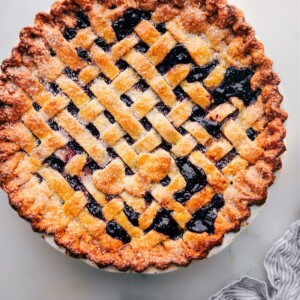
Pie Crust Recipe
Equipment
- Food processor optional
- Plastic Wrap plastic film, not press and seal
- Pie pan and pie weights (or dried beans, sugar, lentils, etc.)
Ingredients
- 7 tablespoons unsalted butter cubed and chilled
- 2 to 3 tablespoons ice water
- 1-1/3 cups all-purpose flour
- 1/2 teaspoon salt
- 1 tablespoon powdered sugar
- 1 large egg yolk see note 1
Instructions
- (The video in the post is a helpful visual!) Cut the butter into small cubes and place back in the fridge. Fill a small bowl with ice and water. Set aside.
- Make crust in food processor: (No food processor? See note 2). Add flour, salt, and powdered sugar to a 10–14-cup food processor. Pulse twice just to mix. Add cubed and cold butter straight from the fridge and pulse 10–12 times in 1-second increments or until butter is the size of frozen peas. Add the yolk only (no whites!) and 2 tablespoons water. Pulse until dough comes together into crumbles, about 6–8 one-second pulses. Do not overmix dough in the food processor. The dough should still be crumbly when you are done mixing. That said, if everything looks sandy, add the last tablespoon of water and pulse 3–5 more times. Avoid over pulsing.
- Dump everything from the food processor onto a clean work surface. Without kneading at all, press dough together into a round, flat disc. Touch as little as possible! Wrap tightly in plastic wrap and chill for at least 1 hour, preferably 2 hours.
- Pull out 2 large sheets of plastic wrap and set over a clean work surface. Unwrap and place chilled dough in the center of the plastic wrap sheets. Top the dough with 1 long sheet of parchment paper and begin to roll it out. Roll it out 3–4 inches larger than the pie dish you’ll be using. Once dough is fully rolled out, gently coax off the top layer of parchment paper. Use the overhang of plastic wrap on the bottom to pull the plastic wrap and crust off the counter, then transfer upside down into the pie tin. Drape dough over the pie tin (again, no pulling or stretching—this causes shrinking) and press into place. Gently coax off the plastic wrap.
- If you will be adding a pie filling and another crust on top, transfer the crust to the freezer for 20 minutes before adding a cooled filling and top pie crust. If you are using just 1 crust, finish the edges here: Trim off any large amounts of excess pie dough, then fold the remaining excess under the edge and seal together into a thick, snake-like crust edge. Even out the thickness around the edge and make sure the dough is sitting on the rim of the pan. Don’t pull the crust—this will make it shrink. Use both index fingers and your thumb to press the dough into a crimping pattern. Short fingernails make this easier.Easier method: Seal the pie together and form the thick, snake-like crust edge. Then use the tines of a fork to press on the edges of the pie, creating a nice pattern.Place in the freezer and freeze for at least 30 minutes (preferably an hour).
- A few options for baking: If the pie you are making bakes for longer than 40 minutes, you don’t need to par-bake this bottom crust. Let the pie filling cool and put it into the pie crust. Bake according to recipe directions.Par-Bake: If the pie you are making bakes for less than 40 minutes, par-bake the crust. To do so, remove chilled crust from freezer and use a fork to poke down the bottom of the crust a few times to keep it from bubbling. Place a large sheet (or 2) of parchment paper in the crust, leaving plenty of overhang for easy removal. Fill the entire base of the pie with pie weights, dried beans, rice, lentils, or even sugar! Bake at 400°F for 15 minutes. Remove crust from oven and use the overhang to gently pull out the parchment paper and weights. Return crust to oven and bake 5 more minutes. Remove and let cool completely before adding the filling.Fully Bake: Follow directions for par-baking, but instead, bake 60–75 minutes at 350°F. Remove from oven and use the overhang to gently pull out the parchment paper and weights. If needed, protect the rim with a crust shield while baking. Let fully cool before adding the filling.
Video
Recipe Notes
Nutrition
Nutrition information is automatically calculated, so should only be used as an approximation.

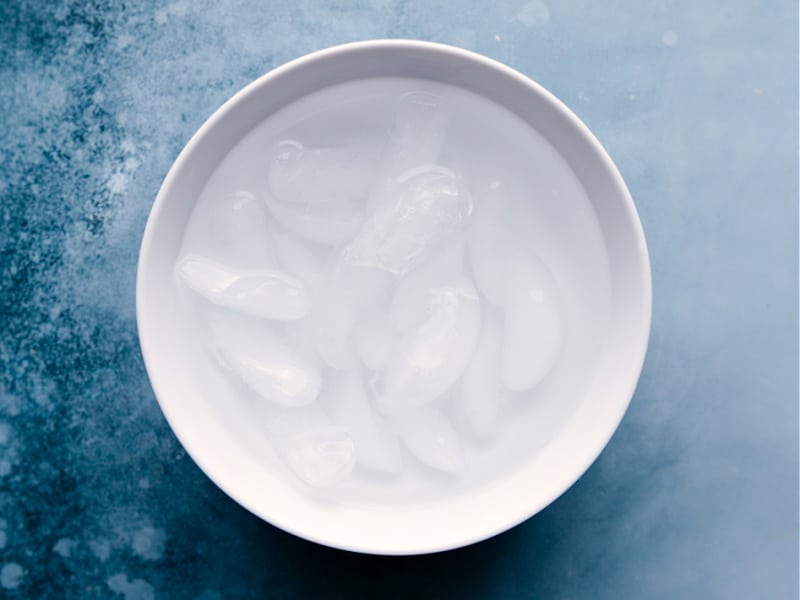
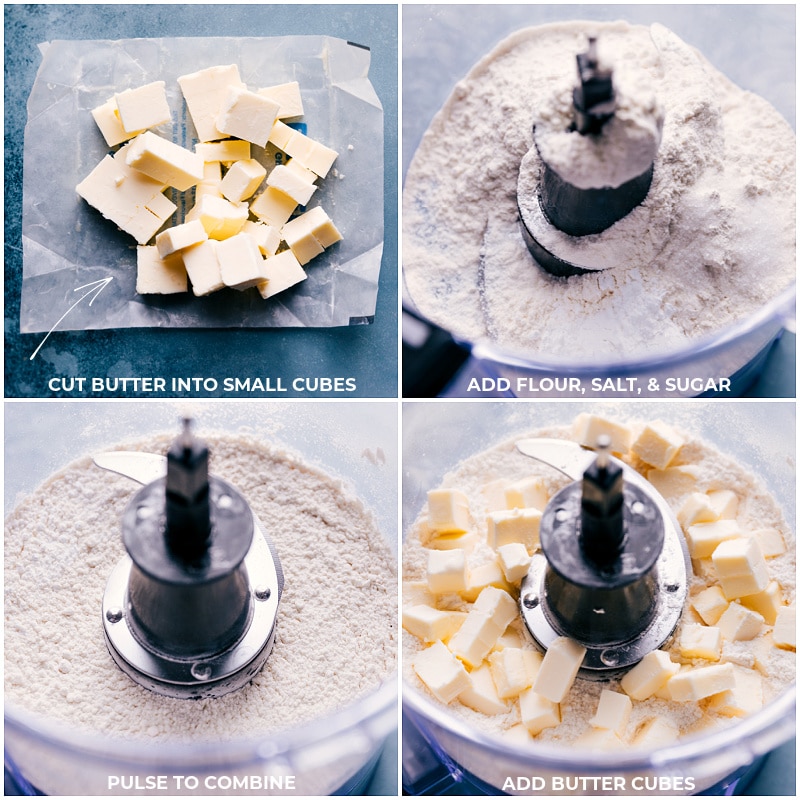
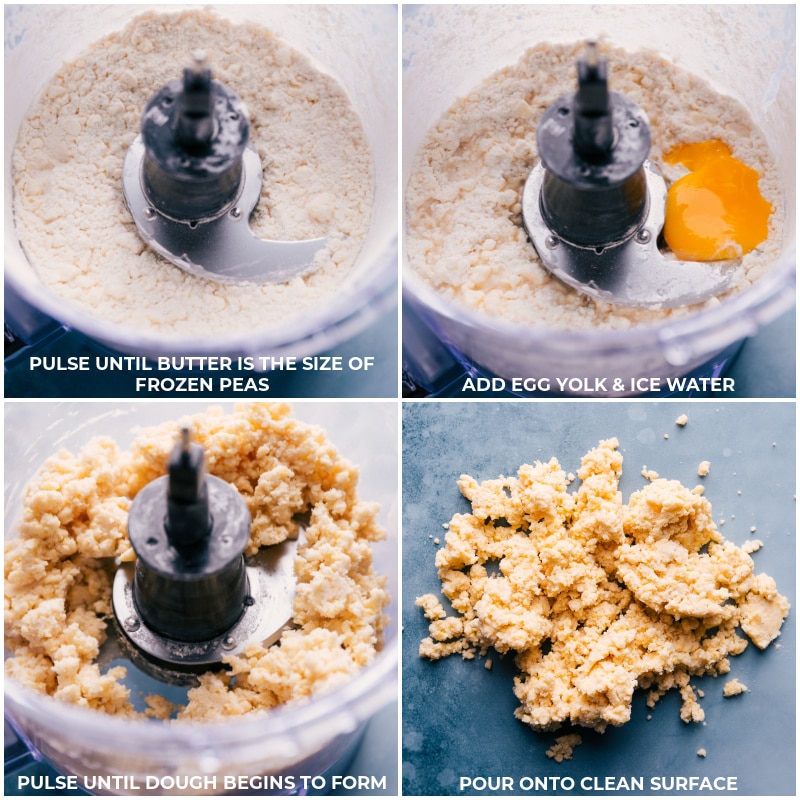
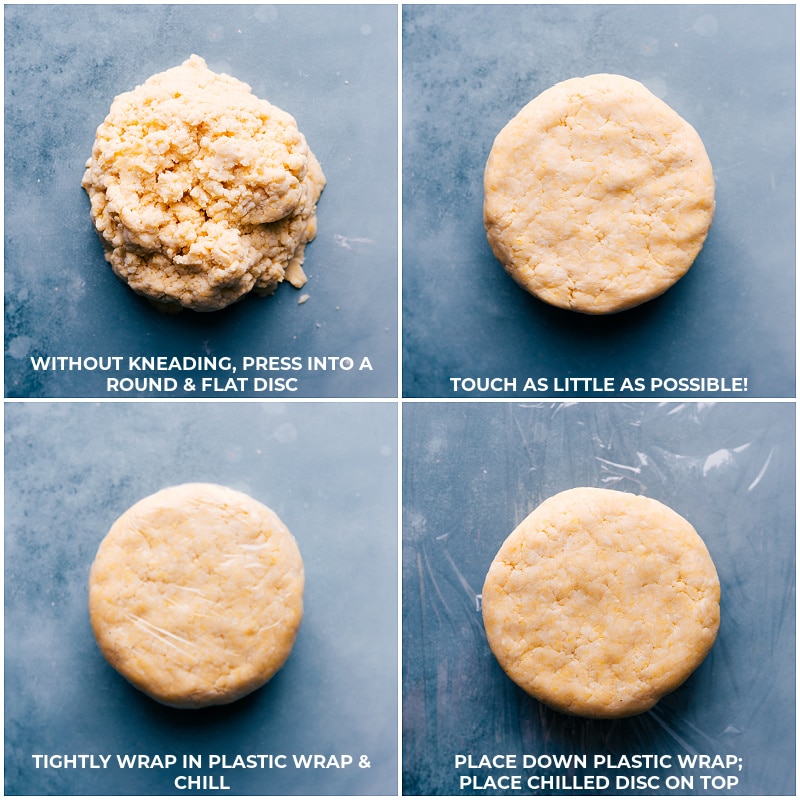
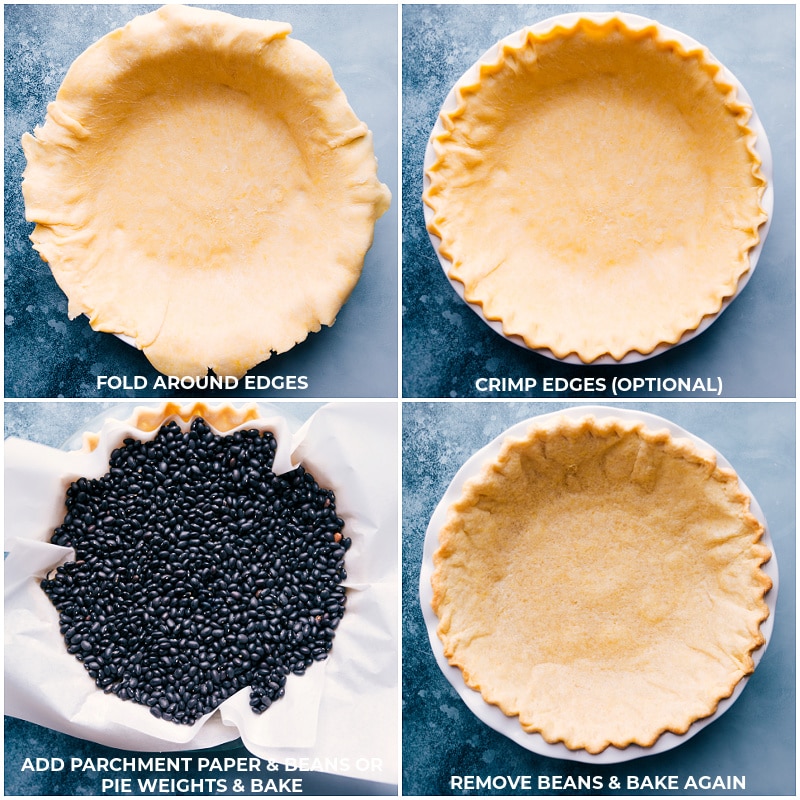
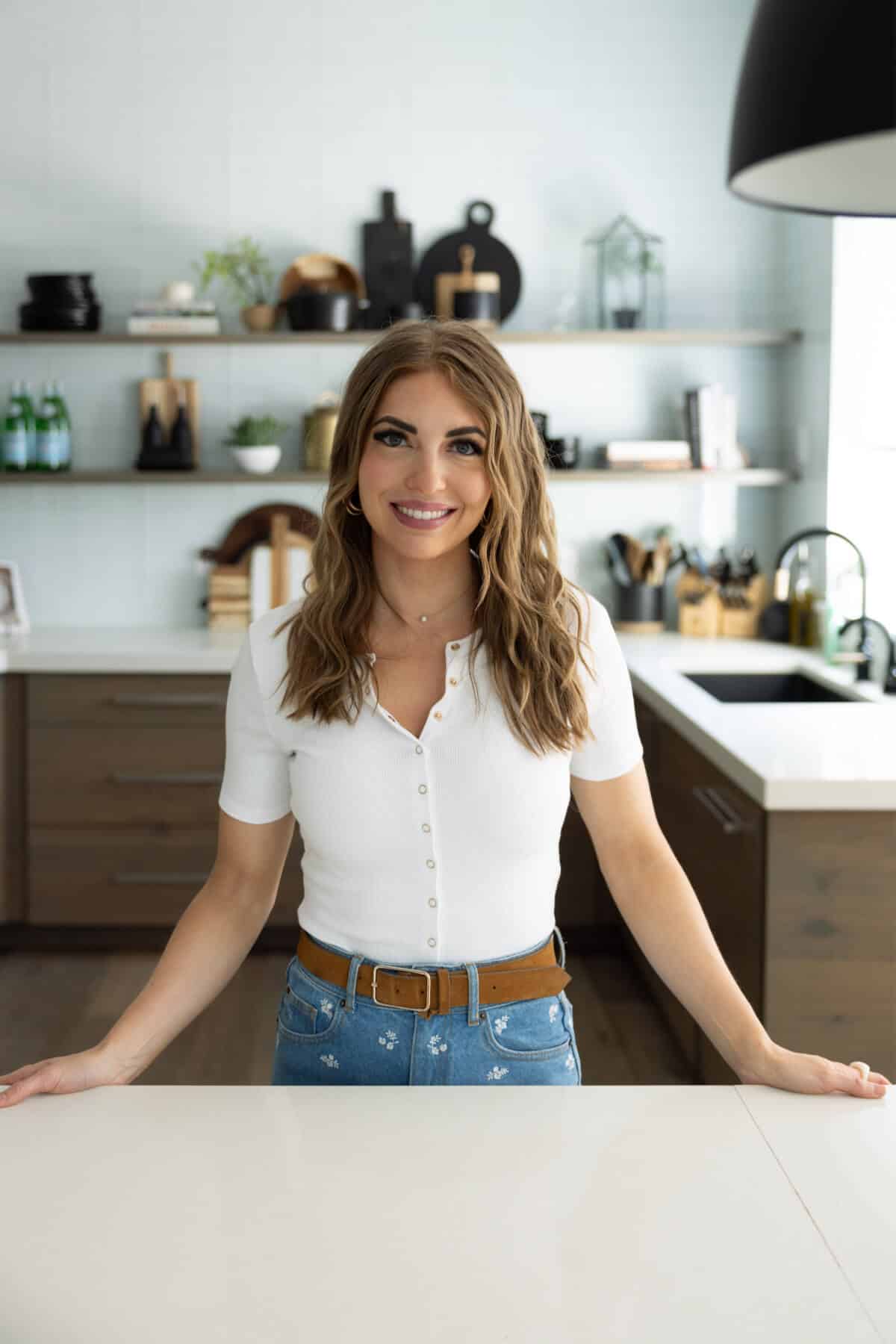

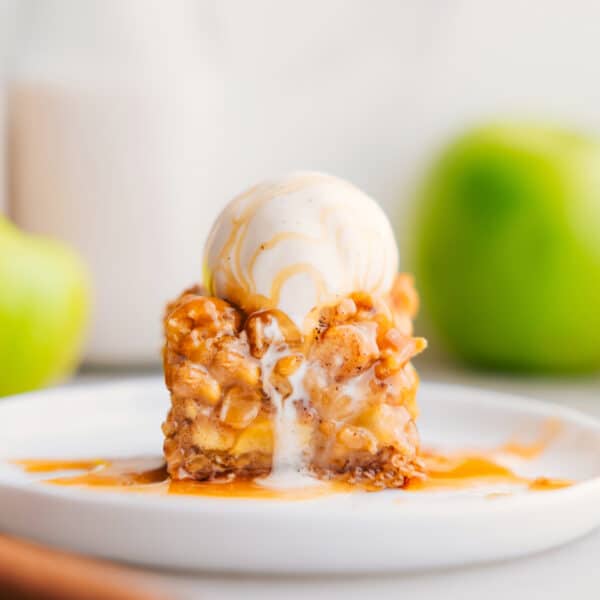
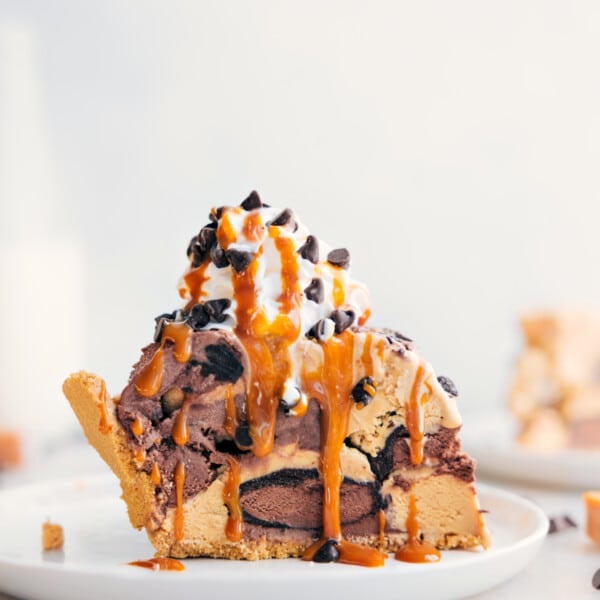
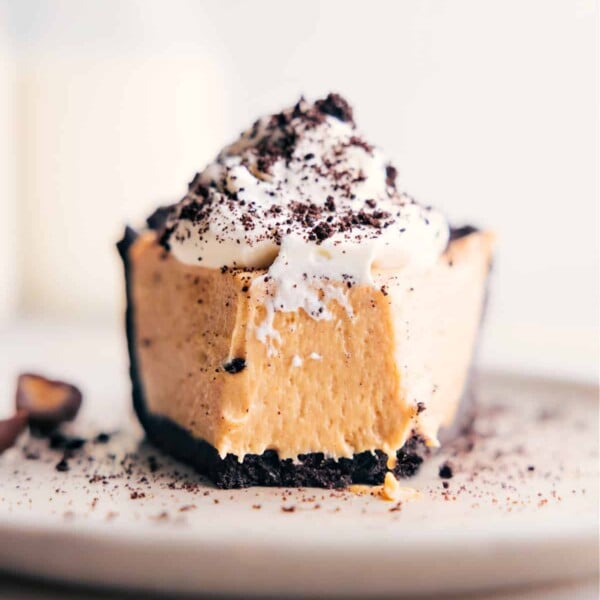










Can this crust be baked ahead of time and filled a day or two later?
Absolutely! Just let it chill in the fridge or freeze if it is going to be more than a few days!